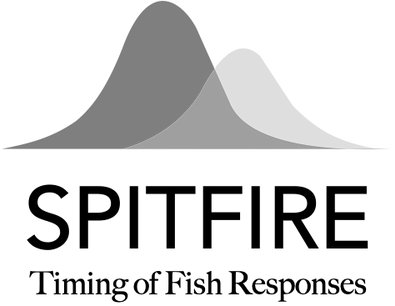A Sofia A
FERREIRA

SPatial variability and Implications of the Timing of FIsh Responses to the Environment

This is an Individual Fellowship funded by a MARIE SKŁODOWSKA-CURIE ACTION Call: H2020-MSCA-IF-2017, project number 794301. The project is lead by myself, Sofia Ferreira, and is a collaboration with Joël M Durant from the Centre for Ecological and Evolutionary Synthesis (CEES) at the University of Oslo (Norway) and Anna B Neuheimer originally from the University of Hawaii at Manoa (USA), but currently on leave at a COFUND (Marie-Curie) Fellowship at the Aarhus Institute of Advanced Studies (Denmark). I am based at CEES, University of Oslo.
Summary
Prediction of fish production is hindered by the lack of high-resolved data, and the complexity of the bio-physical systems affecting fish survival. A key factor determining the survival of larval fish is the relationship between predator recruitment and prey-predator overlap (match-mismatch hypothesis, MMH)1,2. MMH thus offers a mechanistic explanation for the fluctuations in fish recruitment, i.e. the number of fish entering the fishery. However, little is known about how MMH mechanistically explains population and ecosystem dynamics across species and regions. Therefore, the main goal of SPITFIRE is to quantify the ability of an improved MMH to globally explain fish dynamics, by acknowledging the roles of zooplankton (animal-like drifters, not just phytoplankton, plant-like drifters), space and mismatch (Fig. 1). The data needed to achieve SPITFIRE objectives include long-term phytoplankton, zooplankton, fish distributions and their annual mean timings from a specific location (WP1), and the Atlantic and the Pacific basins (WP2 and WP3, Fig. 1). All components necessary for project success are in-hand both through the collaborative network of experts already established and data resources via participants providing insight into MMH dynamics, fish lifehistory dynamics, oceanography, and both the Atlantic and the Pacific ecosystems. By comparing predator-prey relationships, SPITFIRE will help answer the major question in fish ecology and management – what determines fish recruitment? – and thus lead to better management of marine resources.

Fig. 1 - Conceptual figure of SPITFIRE. WP: work package; dark green: prey; light, lined green: predator; and squared, purple: overlap.